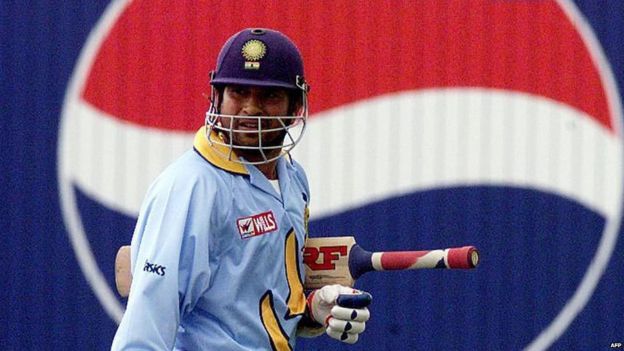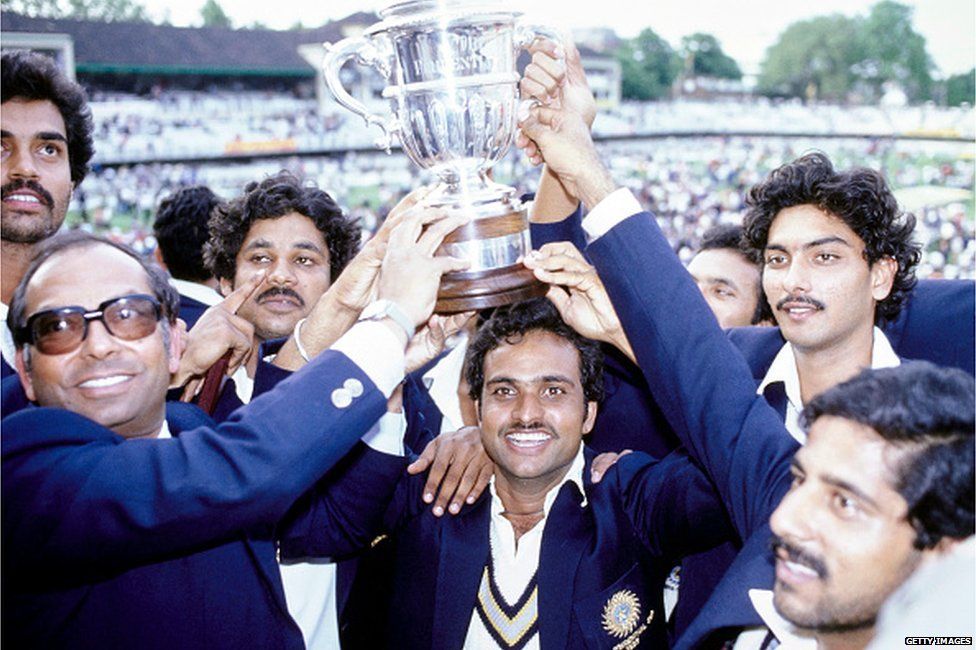
The day that changed Indian cricket
India’s victory in the 1983 Cricket World Cup is still seen as one of the greatest upsets in the history of sport.
At the time, India were considered to be a lost cause in one-day international cricket; in two previous World Cups, they had won just one match.
On 25 June 1983, India achieved what had seemed impossible by beating the star-studded West Indies.
Batting first, India were bowled out for 183. When Viv Richards led his team to 50-1 in reply, it looked like being another chance for the Caribbean camp to celebrate, but then all was about to change for India.
Richards mistimed a hook over mid-wicket and sent the ball soaring into the sky. India captain Kapil Dev darted back from mid-on, trained his eye on the ball and clasped it in his palms. The floodgates opened, the mighty Windies collapsed for 140, India rejoiced and the country’s love affair with one-day cricket was born.


The ‘lowest point’ in Indian cricket
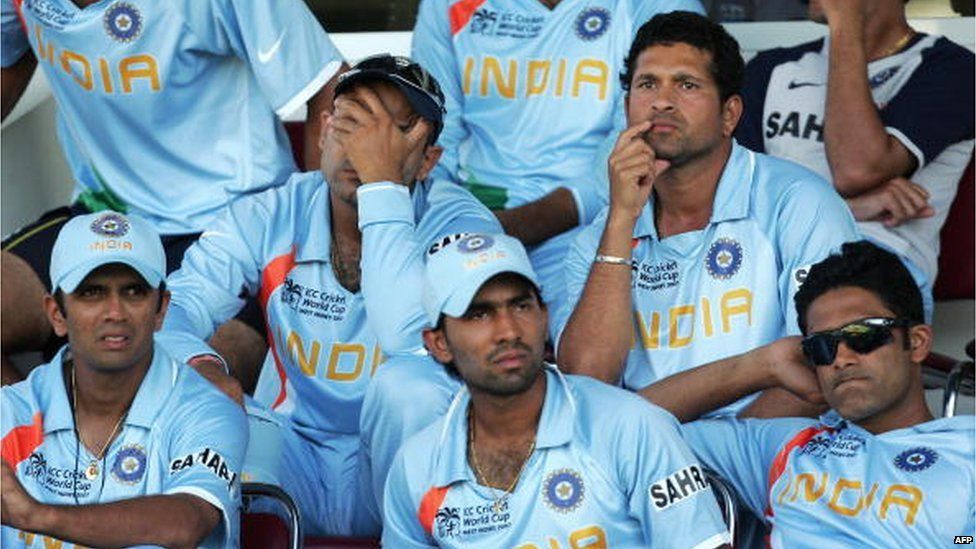
India’s “lowest point” in World Cups came in 2007 in the West Indies, when a side led by Rahul Dravid lost to Bangladesh and Sri Lanka in the group stages to crash out.
Underdogs Bangladesh caused the biggest upset by beating India by five wickets in a low-scoring game in Port of Spain.
Commentators called India’s performance “shambolic” and blamed the team’s “toothless bowling attack” and “sloppy fielding” for the loss.
Following the defeat, enraged Indian fans attacked wicketkeeper MS Dhoni’s house, which was under construction. There were protests against the team in some cities, and effigies of the players were burnt in the eastern city of Kolkata.


An epic face-off
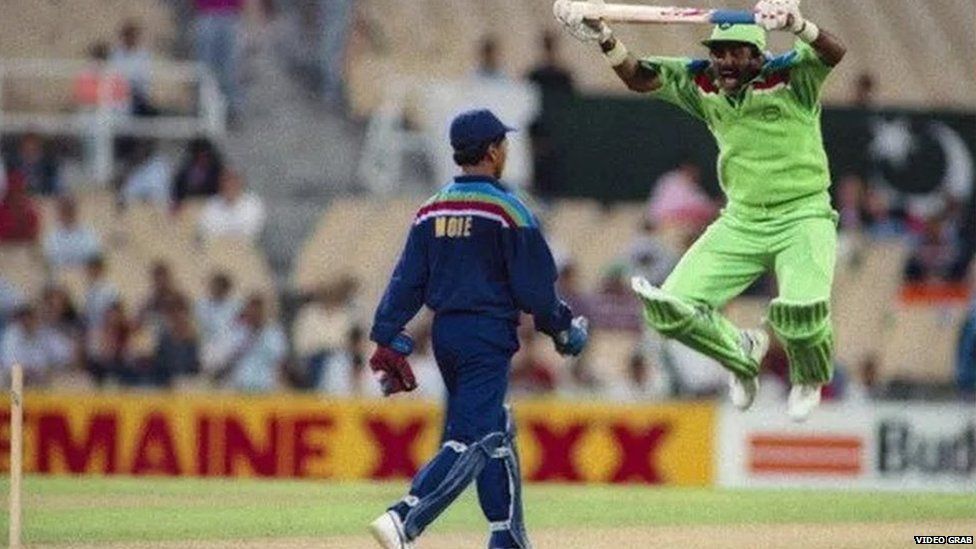
The confrontation between India wicketkeeper Kiran More and Pakistan batter Javed Miandad in the first World Cup encounter between India and Pakistan in Sydney in March 1992 is unforgettable.
“The wicketkeeper’s over-optimistic appeal for a leg-side catch led to verbal exchanges, and later Miandad mockingly leapt up and down, in apparent imitation,” wrote ESPN Cricinfo about the incident.
Years later More remembered the incident in an interview.
“In Hindi, he was saying, ‘don’t worry we will win this match easily’. And I said, ‘go to hell, we will win this match’. Then there was an appeal down the leg side off Sachin Tendulkar. I thought he was caught behind. I appealed and Javed swore at me. I told him to shut up, he told me the same. Then, there was a run-out appeal when I jumped and whipped the stumps,” More said.
Pakistan were chasing 216 to win, and Miandad ended up scoring 40 runs in 110 balls. India won the match by 43 runs.


The six that put India on top of the world
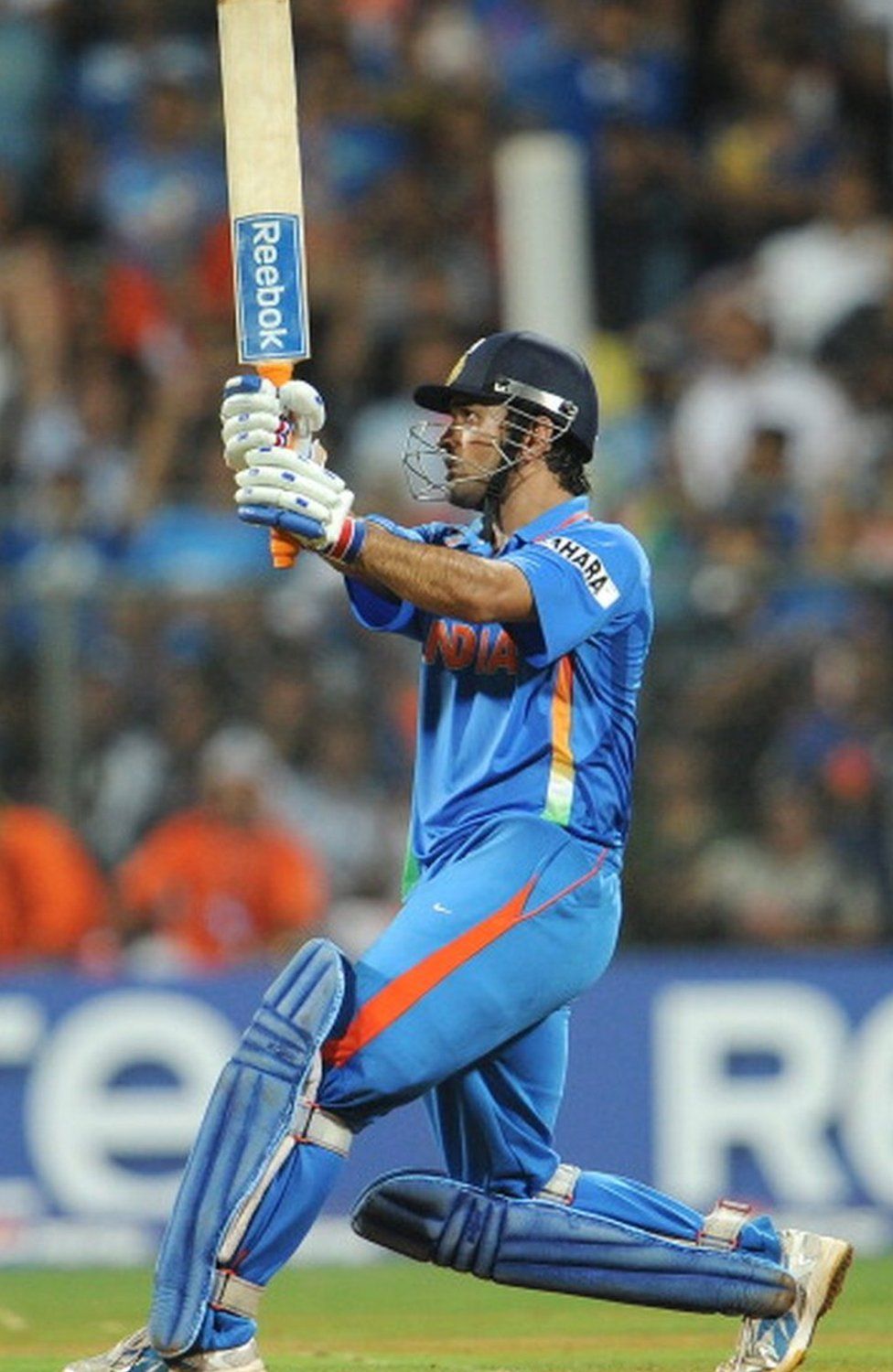

In 2011, India beat Sri Lanka by six wickets in a pulsating final to deliver World Cup glory to their cricket-mad population for the first time since 1983.
Gautam Gambhir was out for 97, but captain MS Dhoni’s brilliant unbeaten 91 led India to a famous win with 10 balls to spare.
The skipper, struggling for form throughout the tournament, played the innings of his life and sealed the victory with a phenomenal straight six off Nuwan Kulasekara that sailed high into the stands.
That six and his subsequent meditative reaction will be cherished for generations.


Gavaskar’s infamous ‘crawl’

India’s legendary opening batter Sunil Gavaskar bagged a dubious distinction in his very first World Cup match in London in 1975.
England batted first and scored 334-4 in 60 overs – the highest ODI total at the time – and India lost the match by 202 runs.
“Indian stodge follows England’s spice,” wrote the Sunday Telegraph.
Gavaskar finished not out, but with a paltry 36 runs off 174 balls. His innings contained a single four.
Livid India team manager GS Ramchand described it as the “most disgraceful and selfish performance I have seen”.
“His excuse [to me] was the wicket was too slow to play shots but that was a stupid thing to say after England had scored 334,” he said. Our national pride is too important to be thrown away like this”.
Gavaskar later admitted it was “the worst innings I have ever played” and that his batting “wasn’t in conformity with the norms of limited-overs cricket”.


Tendulkar’s emotional century
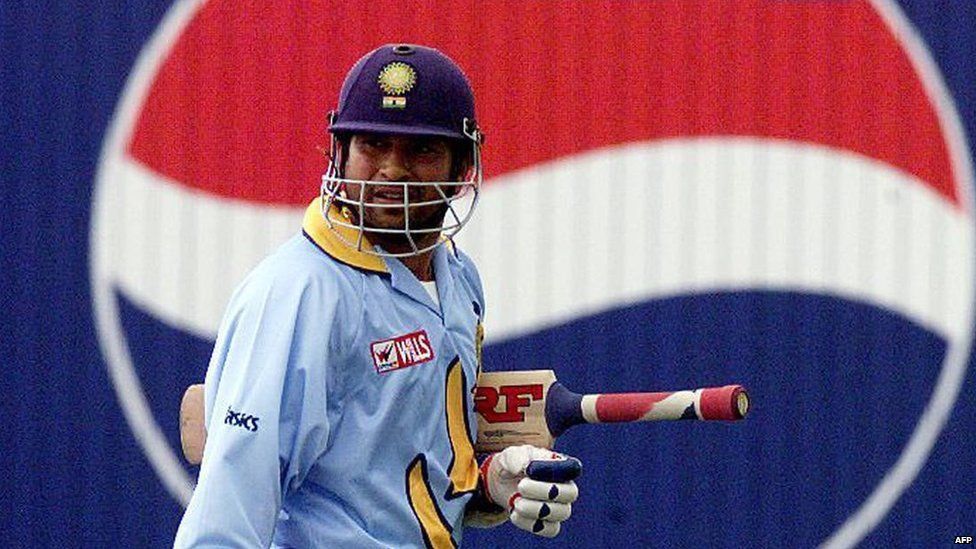

In the 1999 World Cup, Tendulkar scored a century days after the death of his father.
India had lost to South Africa in the opening match and on the eve of the game against Zimbabwe, Tendulkar, 26, received the news of his father’s death. He flew back to India.
India suffered another defeat against Zimbabwe and were facing elimination.
After his father’s funeral, Tendulkar returned to England and played a game-changing 140 not out against Kenya in Bristol, leading India to a score of 329-2. India then comfortably restricted Kenya to 235-7, securing victory by 94 runs.
The man of the match was Tendulkar.
“That [the innings], it seemed to me, was what my father would have wanted me to do, and that’s what prompted the decision to return to London to play the remaining World Cup matches. Though I managed to score a hundred in the match against Kenya – which remains one of my most cherished centuries, one I dedicated to my father – my mind was not always on the game,” Tendulkar wrote in his autobiography Playing It My Way.


Rioting fans and an abandoned game
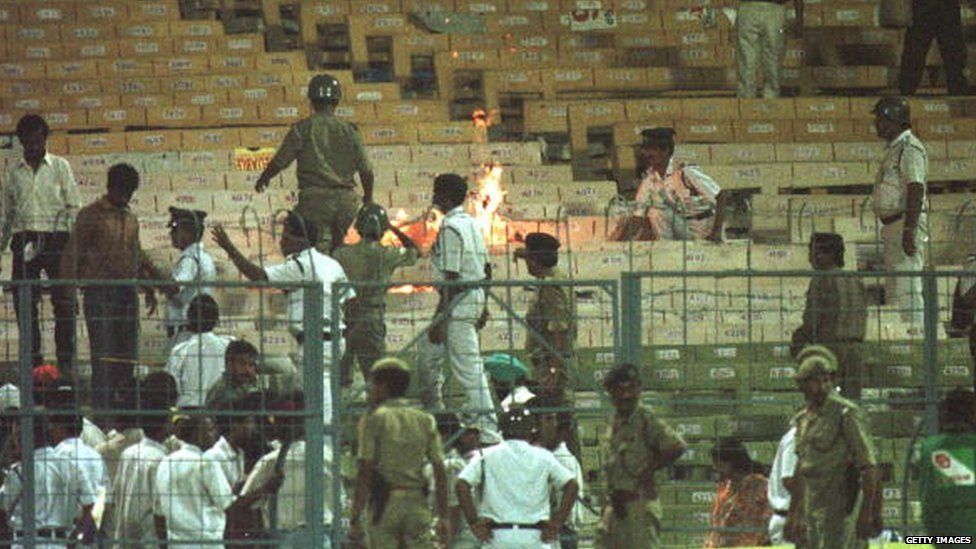
India, chasing 252 on a crumbling pitch in the 1996 World Cup in Kolkata, looked set for a certain defeat at 120-8.
However, the March semi-final had to be forfeited because the irate Kolkata crowd threw projectiles onto the field and set fire to the stands. It was the only time a World Cup match was abandoned because of crowd trouble – and Sri Lanka won by default..
The image of India’s unbeaten batsman Vinod Kambli crying as he left the field lingers as an iconic moment from that tournament. “I cried because I thought I was robbed of a chance to do it [win] for my country,” said Kambli.
Mohammad Azharuddin, India’s captain, faced severe backlash for choosing to field first, and his residence had to be placed under armed guard.


Nehra’s sensational spell

India were defending 250 against England in Durban in the 2003 World Cup – a total that was competitive but not necessarily match-winning.
England were 18-2 within the first six overs before Indian pace bowler Ashish Nehra joined the attack.
“What followed was a lesson in the art of seam bowling, angling in from over the wicket and keeping it in the narrow straight just outside off,” wrote Siddhartha Vaidyanathan, a cricket writer in ESPNCricinfo.
Despite nursing a swollen ankle, Nehra bowled his full quota of 10 overs straight and finished with remarkable figures of 6-23 – the best performance by an Indian bowler in World Cup history.
India won by 82 runs.


A dream partnership
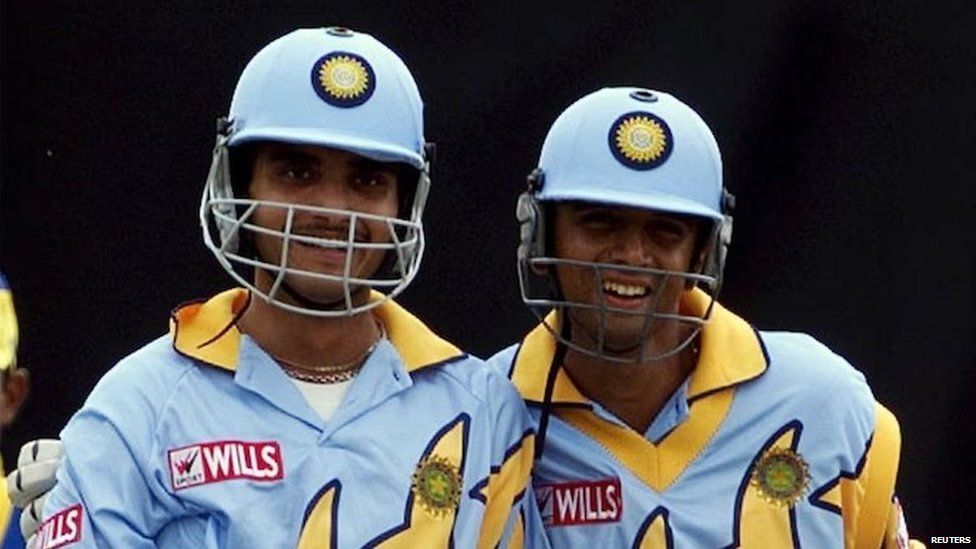
When Rahul Dravid and Sourav Ganguly put on one-day cricket’s first 300-run partnership in the 1999 World Cup, it broke all records.
Their partnership of a staggering 318 runs in 45 overs was the highest in any limited-overs international at the time.
Ganguly scored 183 – his highest ODI score – off 158 balls, including seven sixes and 17 fours. The usually dour Dravid cracked 145 in 129 balls, with one six and 17 boundaries.
The partnership helped India amass 373 runs and beat Sri Lanka by 157 runs.
In 2021 England batter Joss Buttler said he was influenced by this partnership.
“They were my formative years and watching that game with Ganguly and Dravid scoring big hundreds had an incredible impact,” Buttler told Cricbuzz.


The runout that ended a billion hopes
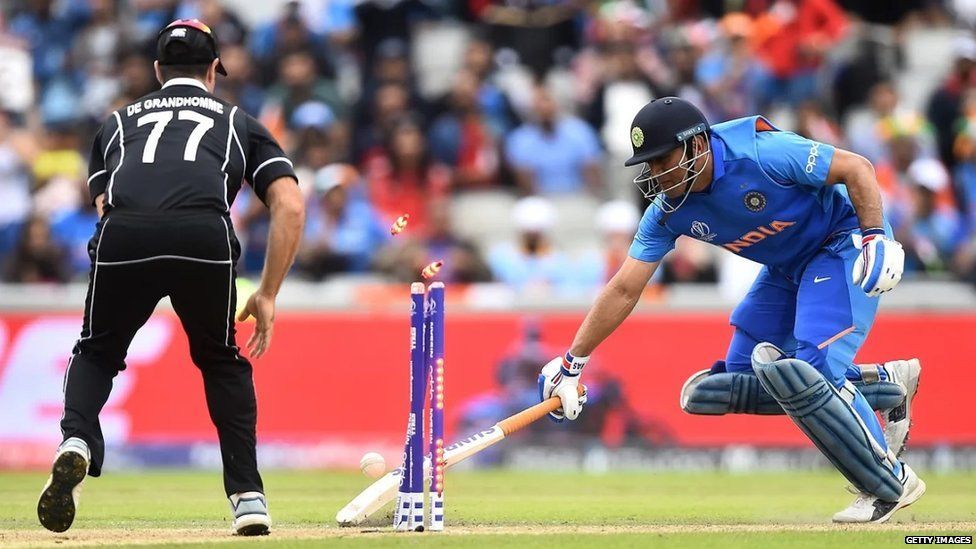
In the sensational 2019 World Cup semi-final at Old Trafford, India, the pre-tournament favourites, were stunned by New Zealand.
When India stumbled to 5-3 and 24-4 while chasing 240 for victory on a tricky pitch, the thunderous crowd noise defied the Kiwis’ dominance.
With India needing 25 off 11 balls at the start of the 49th over and three wickets in hand, Dhoni held the strike. This was the moment to determine if he could still do it.
Trying to keep the strike, Dhoni turned for a desperate second run and was run out by a direct hit from Martin Guptill.
Despite being one of the greatest finishers in one-day cricket, Dhoni was scoring at a rate below a run per ball in that tournament. In his final innings for India, he fell agonisingly short, run out for 50 from 72 balls.
BBC News India is now on YouTube. Click here to subscribe and watch our documentaries, explainers and features.

